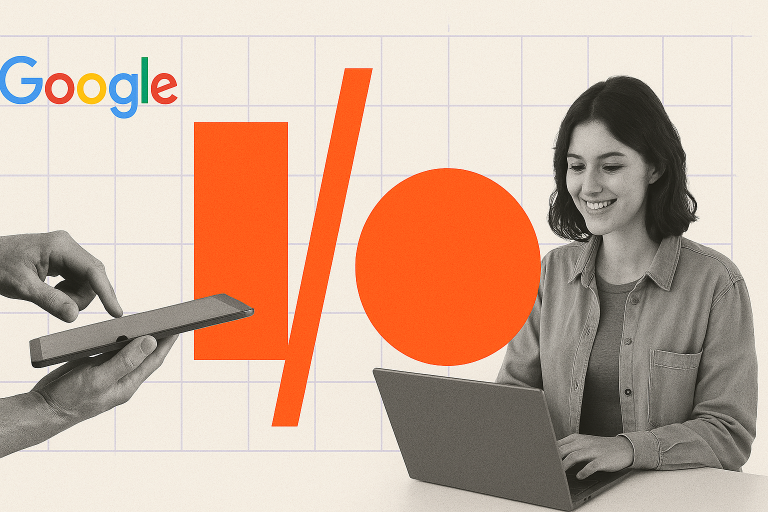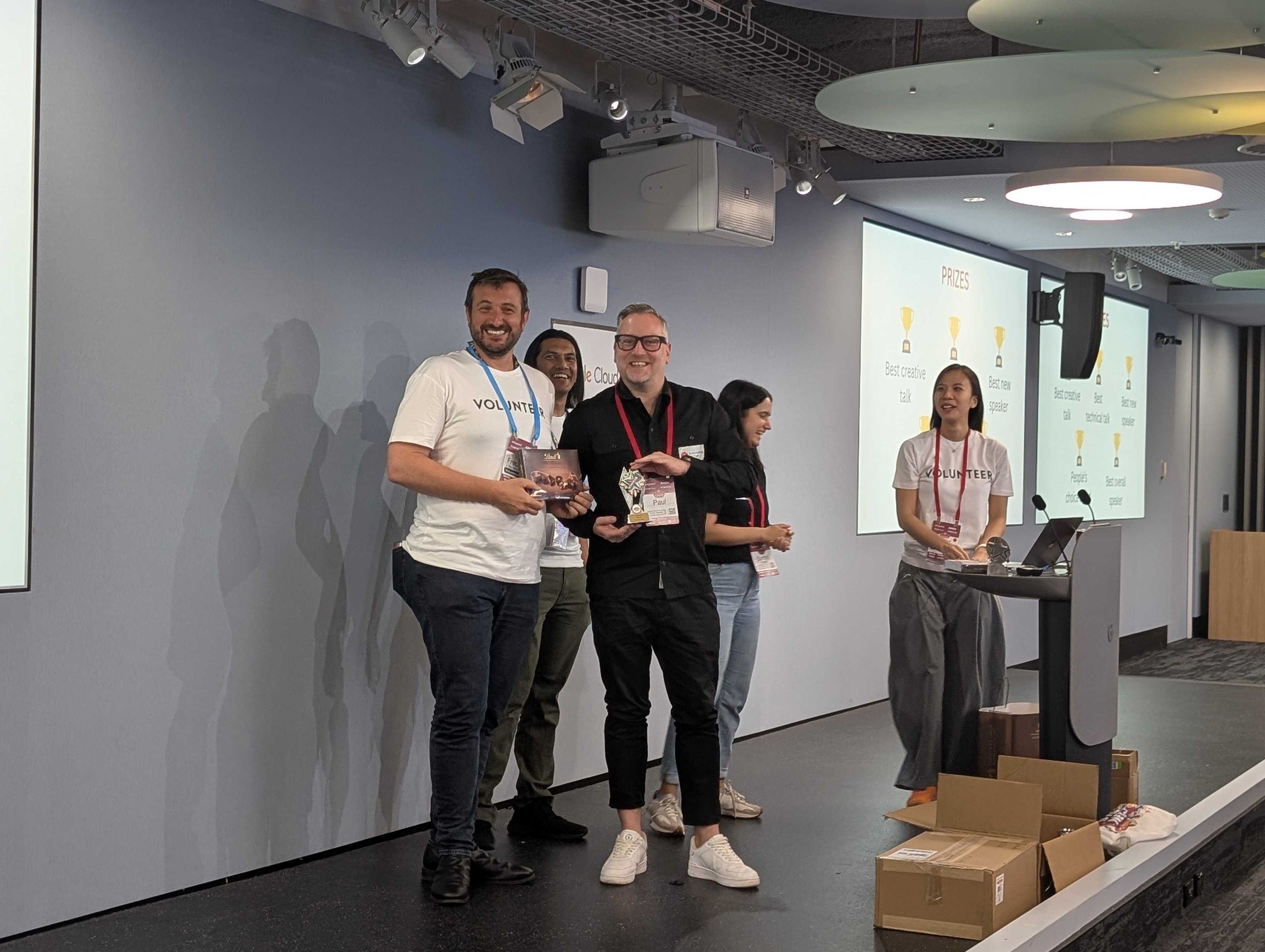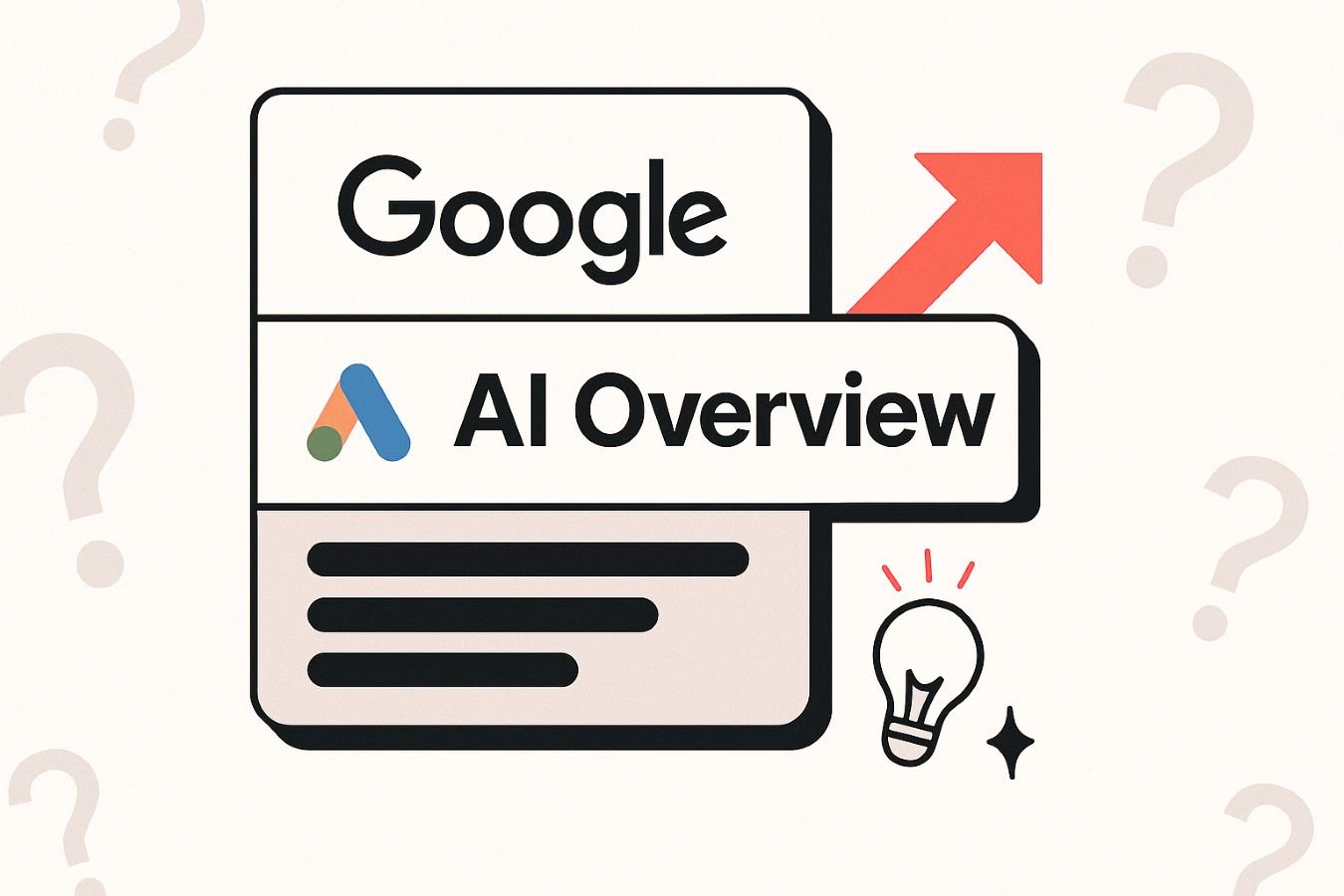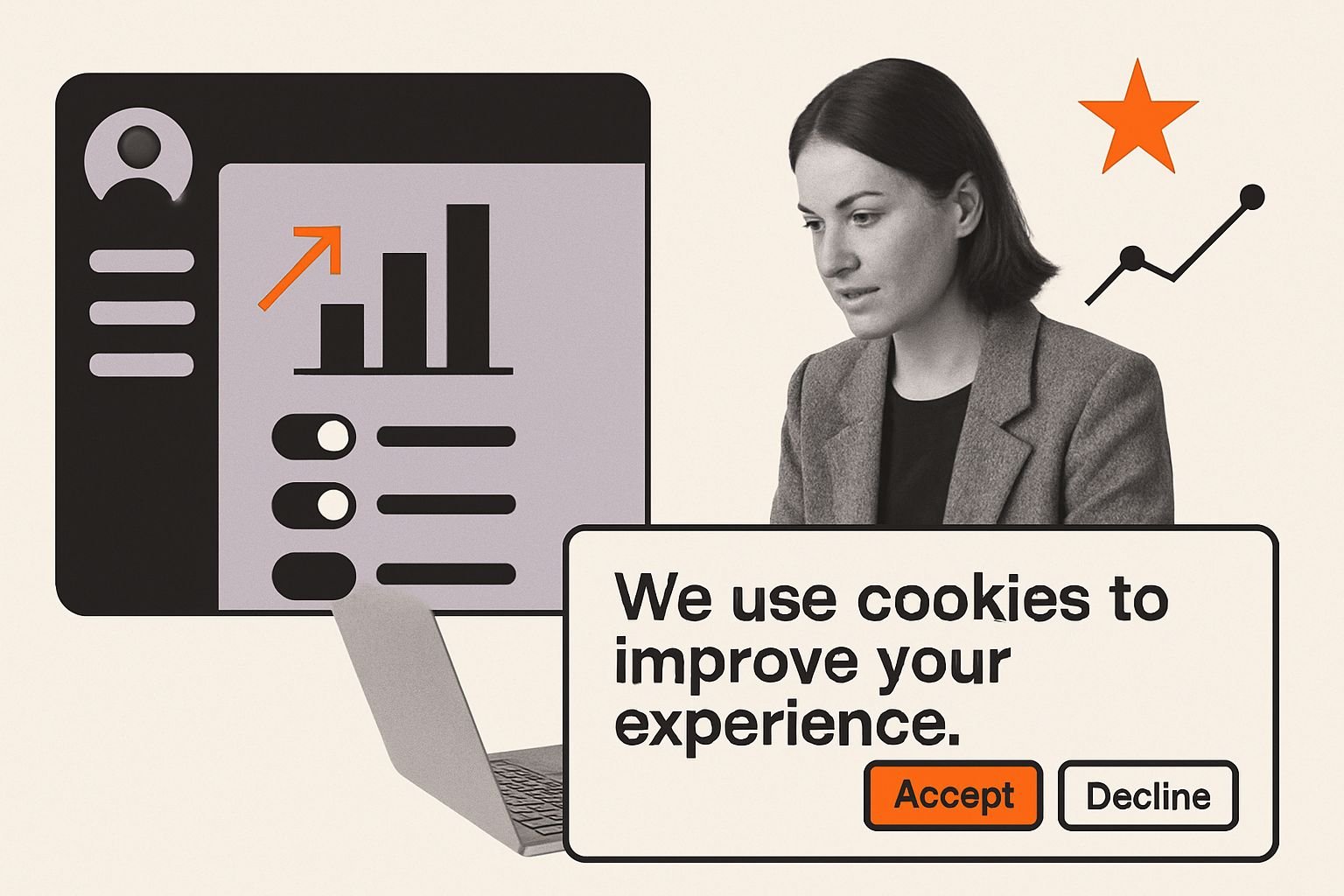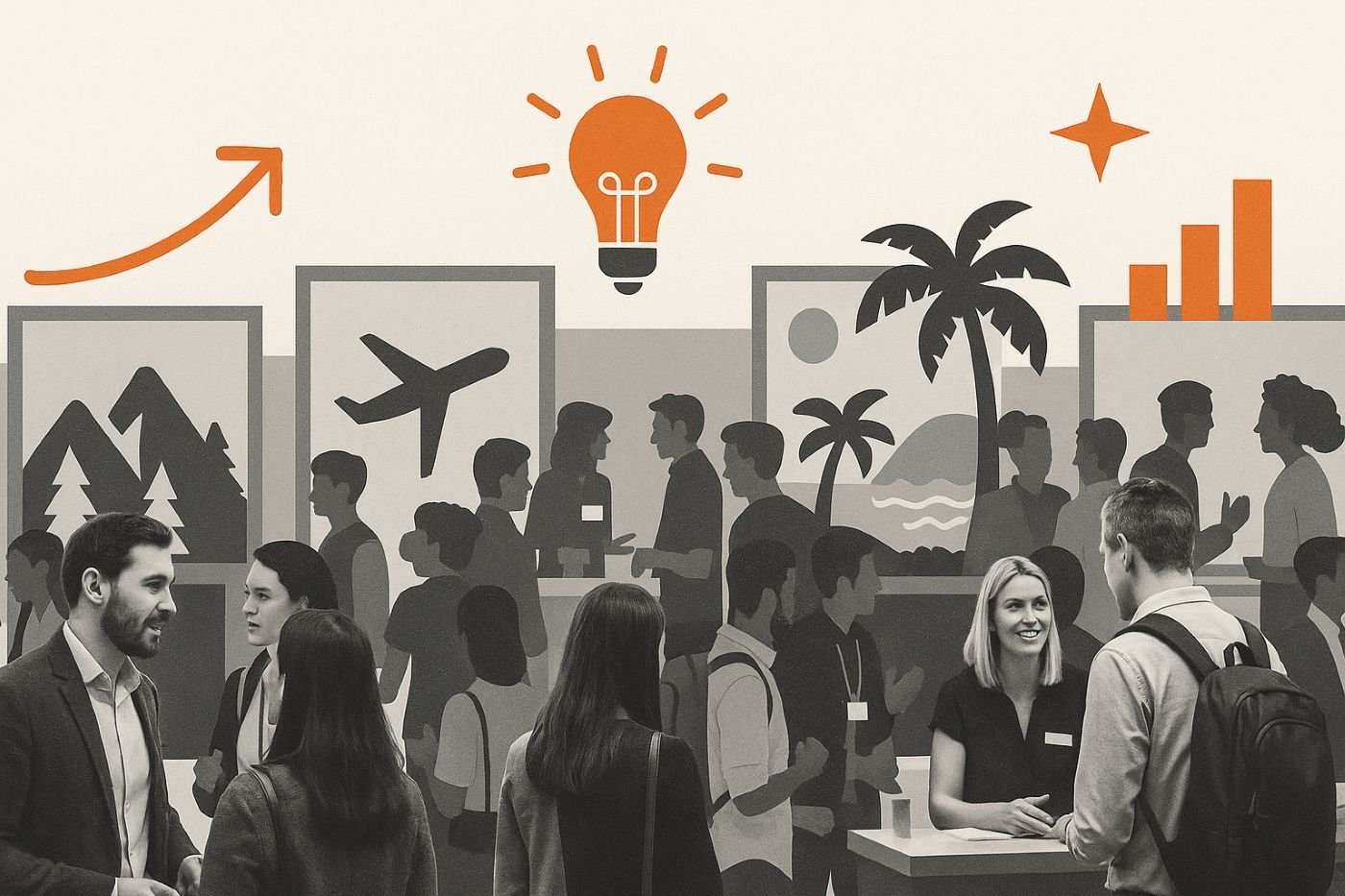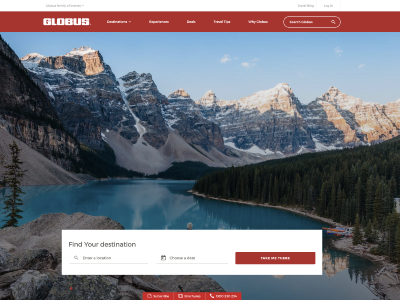Google I/O 2025: AI Rewrites the Search Playbook – What Marketers Need to Know Now
Google I/O 2025 wasn’t just another developer conference; it was a clear line in the sand. The tech giant unfurled a suite of AI advancements that are set to fundamentally reshape its core products, with Google Search front and centre. For marketing leaders and practitioners, the message is unmistakable: the ground is shifting, and the old playbooks need a serious update. There’s a palpable sense that Google is back in the AI driving seat, demonstrating not just innovation, but a clear vision for how AI will permeate our digital lives.
The critical question for businesses now isn’t if AI will change search marketing, but how profoundly and how quickly strategies must adapt. This isn’t about chasing trends; it’s about navigating a new digital ecosystem brimming with both opportunity and complexity. This analysis cuts through the noise, offering a detailed examination of I/O 2025’s key marketing-related announcements and their tangible implications for your business.
While I/O has painted the big picture, the finer strokes for marketers – especially crucial Australian context – will be filled in at the upcoming Google Marketing Live events. Consider this your essential briefing on the AI-driven transformations already underway.
Part 1: The AI Revolution in Google Search – Understanding the New Landscape
Google I/O 2025 didn’t just hint at change; it heralded a profound restructuring of how search works, all powered by significant leaps in its AI capabilities. This isn’t an incremental tweak; it’s a foundational shift in how users will find information, directly impacting how businesses must design their digital strategies.
The Foundational Engine: Gemini 2.5 Series – Power and Precision
At the heart of this revolution are Google’s latest Gemini 2.5 models, particularly the highly capable Gemini 2.5 Pro and the nimble Gemini 2.5 Flash. These aren’t just smarter; they’re more versatile, demonstrating impressive gains in complex reasoning, coding, and sophisticated multimodal understanding – seamlessly processing text, images, audio, video, and code. A standout feature is Gemini 2.5 Pro’s ability to handle a 1 million-token context window as standard, stretching to an impressive 2 million tokens for specific tasks. This massive capacity allows for far deeper analysis of extensive information, paving the way for more nuanced and comprehensive search outputs. Add to this the new ‘Deep Think’ mode for Gemini 2.5 Pro, an experimental feature designed to unravel highly complex problems, and the scale of Google’s ambition becomes clear.
Google’s commitment to this AI-centric future is further evidenced by its claim of launching over 20 major AI product enhancements since the last I/O. The Gemini app itself is rapidly gaining traction, with Google announcing at I/O 2025 that it now has over 400 million monthly active users, and usage of the 2.5 Pro model within the app is up by 45%. This points to a significant and accelerating adoption of Gemini across Google’s entire ecosystem.
AI Overviews: Pervasive Reach, Evolving Impact
AI Overviews – those AI-generated summaries appearing at the top of many search results – are no longer a novelty but a rapidly expanding fixture. Google confirmed they are now active in over 200 countries and territories, reaching an estimated 1.5 billion users monthly. Liz Reid, Google’s Head of Search, also noted that AI Overviews are driving a 10% uptick in search usage for the types of queries where they appear.
This scale demands a clear-eyed analysis of its market impact. Early third-party data indicates a measurable dip in organic click-through rates (CTR) for certain informational queries, as the AI often provides the answer directly. Studies have reported potential organic CTR declines for top-ranking pages anywhere from 15.5% to a significant 34.5% when an AI Overview is present, with some analyses suggesting drops nearing 55% in specific scenarios. This undeniably challenges established mid-funnel strategies that rely on high-volume informational traffic.
However, this isn’t necessarily a doom-and-gloom scenario. The working hypothesis is that while overall organic traffic might decrease for some queries, the users who do click through from a more context-rich AI Overview or a detailed AI Mode session are likely to arrive with much higher intent. This could, in turn, lead to improved on-site conversion rates. The strategic imperative for businesses? Adapt with precision. Focus on becoming an authoritative, citable source within these AI-generated responses and on capturing that more qualified, albeit potentially scarcer, traffic.
AI Mode: Search Gets Conversational
Building on AI Overviews, I/O 2025 marked the full US rollout of “AI Mode” in Search. This isn’t just search with AI sprinkled on top; it’s a fundamentally more conversational and multimodal way for users to interact with information. Think sustained dialogues rather than single-shot queries. Users can pose longer, more natural questions – reportedly two to three times the length of typical searches – and receive comprehensive, synthesised answers.
Key features that set AI Mode apart:
- Deep Search: For complex topics, AI Mode can perform a significantly deeper dive, deconstructing queries, processing information from diverse sources, and then delivering a detailed, often extensively cited, report-style answer.
- Multi-step Reasoning & Planning: AI Mode is being built to handle queries that require planning or breaking down a problem into manageable steps, making search more of a problem-solving partner.
- Follow-up Questions & Guided Exploration: The interface encourages iterative refinement. Users can ask follow-up questions and explore different facets of a topic, with AI Mode facilitating this “query fan-out” to guide users towards deeper understanding.
- Personalisation (Search Labs): Soon, AI Mode will be able to tap into a user’s other Google products like Gmail and Drive (with explicit consent) to deliver more tailored and personally relevant results. This is slated for Search Labs later this summer for US users.
- Data Visualisation: For queries involving numbers (think financial comparisons or sports stats), AI Mode will be able to generate interactive charts and graphs directly in the search results, offering a more intuitive grasp of complex data.
AI Mode addresses the perceived lack of conversational depth in early AI Overviews. By fostering this richer dialogue, Google aims to significantly boost user engagement and “stickiness.” For marketers, this means getting smart about how users will converse with AI and structuring content to meet these more nuanced, multi-turn informational needs.
Search Live: Your World, Queried in Real-Time
Pushing multimodal capabilities further, Google unveiled “Search Live.” This feature, launching later this summer in Labs (initially US-only), integrates the live visual understanding of Project Astra directly into Search. Imagine pointing your phone’s camera at a tricky maths problem, an unfamiliar plant, or a faulty appliance and having a real-time, back-and-forth conversation with Search about what it sees. It’s a potent new way to seek information, blurring the lines between the digital and physical worlds.
Agentic Capabilities: Search That Does Things (Project Mariner)
Perhaps the most forward-looking reveal was the heightened emphasis on agentic AI, with Project Mariner capabilities being woven into AI Mode. This is where Search transitions from an information retriever to an action-oriented personal AI agent, capable of understanding complex goals and executing multi-step tasks on a user’s behalf.
Google showcased AI Mode assisting with:
- Finding and purchasing event tickets.
- Making restaurant reservations.
- Navigating complex online shopping, including an “agentic checkout” where the AI handles form-filling and payment preparation for user approval.
- Planning detailed travel itineraries by collating information, considering preferences, and presenting options.
This leap into task completion is significant. Underpinning these advanced agentic functions is Google’s support for the Model Context Protocol (MCP) within its Gemini API and SDKs (Google Cloud, 2025; Google, 2025). This open standard, pioneered by Anthropic, aims to create a common language for AI agents and tools, allowing them to seamlessly interact with various external services (like the Zillow real estate example demonstrated). It’s a strong signal towards a future of more interconnected and autonomous AI assistants.
Part 2: Performance Marketing – New Frontiers, New Rules
The AI-driven overhaul of Search, as detailed at Google I/O 2025, sends clear ripples through the performance marketing landscape. This isn’t just about new ad formats; it’s about adapting to fundamentally different user journeys and leveraging a new class of AI-powered campaign tools. The prevailing mood is one of cautious optimism: disruption is certain, but so is the potential for more intelligent, impactful advertising.
Ads in the AI-Powered SERP: Native Integration Takes Centre Stage
A pivotal development is Google’s strategy for embedding ads within these new, AI-rich search experiences. Google has confirmed it’s actively testing and rolling out ads – both Search and Shopping formats – directly within AI Overviews. These typically sit beneath the AI-generated summary, clearly marked as “Sponsored” (Search Engine Land, 2025).
Looking ahead, Google intends to “explore bringing ads” into the immersive “AI Mode,” applying lessons from its AI Overview experiments. This proactive integration of commercial opportunities is a strategically encouraging sign for advertisers. It signals Google’s commitment to creating pathways for businesses to connect with users within these highly engaging, AI-moderated environments. While the precise impact on ad performance and user interaction is still unfolding, the potential to reach users demonstrating high intent within a conversational or deeply researched context is undeniable. This also plays to Google’s strength: its well-established advertising infrastructure should allow for a more seamless and scalable monetisation of these AI products than newer AI entrants might achieve.
AI Max for Search Campaigns: AI as Your SEM Co-Pilot
“AI Max for Search Campaigns” was a key announcement for search advertisers, representing a suite of features designed to bring more of Google’s advanced AI directly into traditional search campaign management. This is now commencing its global rollout. AI Max aims to elevate existing search campaigns by using AI for more sophisticated search term matching (reaching beyond traditional keyword silos with broad match and keywordless technology), dynamic ad text customisation based on query context, and intelligent final URL expansion, all drawing from the creative assets advertisers provide (Google Ads Help, n.d.a).
For marketers, AI Max promises broader reach by unearthing relevant queries that manual targeting might miss, serving more tailored and contextually resonant ad copy, and ultimately, driving better campaign performance. Google’s early internal data suggests advertisers activating AI Max typically see around 14% more conversions or conversion value at a similar CPA/ROAS, with this uplift potentially reaching 27% for campaigns heavily reliant on exact and phrase match keywords. While AI takes on more of the heavy lifting, advertisers retain crucial controls, including negative keywords, brand exclusions, and enhanced transparency through new reporting columns that indicate match source (Marvin, 2025). An Australian business, MyConnect, was an early beta tester and reportedly saw AI Max boost leads by 16% while cutting cost-per-action by 13%.
Innovations in Shopping & E-commerce: A More Immersive Retail Journey
E-commerce is a clear beneficiary of Google’s AI focus, with several I/O announcements poised to significantly enhance the online retail experience:
- AI-Powered Shopping in AI Mode: The new AI Mode is engineered to make product discovery more intuitive and visual, presenting rich product listings and comparisons directly within the conversational interface.
- “Try it on” Feature – A Game-Changer for Fashion: The AI-powered “Try it on” feature, initially for apparel, allows users to visualise clothing on various body types or even on themselves using uploaded photos. This is a significant step forward for fashion e-commerce, likely to boost purchase confidence and potentially reduce returns, directly impacting retailer margins.
- Agentic Checkout – Simplifying the Sale: Google also previewed “agentic checkout” capabilities within AI Mode. Here, the AI can assist users through the entire online checkout process directly from the search interface, streamlining transactions and reducing cart abandonment.
These e-commerce enhancements signal a strategic push towards more immersive, utility-driven, and ultimately, conversion-focused shopping experiences deeply integrated within Google Search.
The Evolving Role of Keywords and Content: Intent is the New Keyword
The rise of AI-driven search demands a strategic rethink of how marketers approach keywords and content:
- From Keywords to Conversational Intent: While foundational keyword research isn’t obsolete, the emphasis is shifting decisively towards understanding broader user intent, underlying concepts, and the nuances of complex, conversational queries. Content needs to be crafted not just to match keywords, but to comprehensively answer the questions behind the queries and facilitate the deeper explorations users will undertake in AI Mode.
- Authoritative, Comprehensive, and Structured Content is Non-Negotiable: To be effectively interpreted, utilised, and crucially, cited by Google’s AI models in AI Overviews and AI Mode responses, content must exude authority, be comprehensive, well-structured for machine readability (think schema markup), and provide clear, factual answers. Accuracy, depth, and the principles of E-E-A-T (Experience, Expertise, Authoritativeness, Trustworthiness) are now table stakes.
- Addressing “Zero-Click” – Visibility and Commercial Focus: With AI directly answering more informational queries, the phenomenon of “zero-click” searches may increase for those terms. The counter-strategy? Optimise content to become the trusted, cited source within those AI-generated answers, gaining valuable brand exposure and reinforcing authority. For queries with clear commercial intent, the focus shifts to ensuring prime visibility in the new ad slots within AI Overviews and AI Mode, and for innovative e-commerce features like “Try it on,” thereby capturing users further down the purchase funnel.
Part 3: Creative & Measurement in the Age of AI – New Tools, New Rules
The AI-driven transformations showcased at Google I/O 2025 extend well beyond search interaction and ad placement. They herald significant shifts in how advertising creative is conceived and produced, and how campaign performance is measured in an increasingly complex and privacy-focused digital landscape. Marketers must gear up for an environment where AI is both a powerful creative collaborator and a critical factor in deciphering data.
The New Era of AI-Driven Creativity: Veo, Imagen, Lyria, and Flow
Google I/O 2025 left no doubt about the company’s ambitions in generative AI for creative production. The event’s own stunning opening film, created using Veo 3, served as a powerful real-world demonstration. While direct, fully automated ad creation within Google’s ad platforms wasn’t announced as an immediate rollout, the strategic trajectory is unmistakable: AI will play an increasingly integral role in assisting, and potentially automating, many aspects of creative development.
- Veo 3 – Cinematic Video from Text: This advanced text-to-video model showcased its ability to produce high-quality, coherent video content from simple textual prompts. Google’s declaration, “Veo 3 – we are entering a new era of creativity,” signals its potential to revolutionise video production for marketing and beyond.
- Imagen 4 – Unprecedented Image Detail: As Google’s most sophisticated text-to-image model to date, Imagen 4 delivers remarkable image quality and detail, with significantly improved capabilities in rendering complex prompts, including notoriously difficult elements like realistic hands and faces.
- Lyria – AI-Composed Soundtracks: Google continues to refine Lyria, its AI model for music generation, offering the potential for custom, royalty-free soundtracks and audio elements for a wide array of creative outputs.
- Flow – An AI-Powered Filmmaking Suite: The new Flow tool integrates Veo, Imagen, and Gemini, providing creators with an AI-assisted environment to generate and edit cinematic clips, control camera angles, and manage visual assets.
What This Means for Marketers (Grounded Speculation): The clear implication is the future integration of these powerful tools into advertising platforms like Performance Max and Demand Gen. This could empower marketing teams to:
- Generate Diverse Ad Creatives at Scale.
- Craft More Personalised or Contextual Ads, Efficiently.
- Slash Creative Production Timelines and Costs.
While human strategic insight, creative direction, and brand stewardship will remain absolutely critical, these AI advancements point to a future where creative iteration and optimisation can happen at an unprecedented speed and scale. The immediate takeaway for marketing departments? Focus on developing robust foundational brand assets and crystal-clear strategic briefs that can effectively fuel these emerging AI creative powerhouses.
Measurement, Privacy & Tracking: Navigating an AI-Influenced Landscape
The evolving digital landscape, shaped by both AI’s ascendancy and ever-increasing privacy considerations, demands an unwavering focus on robust, transparent, and privacy-centric measurement practices.
- First-Party Data is Now Gold Standard: With third-party cookies in Chrome facing a phased deprecation (currently targeted for early 2025, pending ongoing regulatory consultations), the strategic imperative of a strong, consented first-party data strategy cannot be overstated.
- Enhanced Conversions & GA4 – Your Measurement Cornerstones: While not new to I/O 2025, tools like Enhanced Conversions and Google Analytics 4 remain central to navigating privacy-first measurement.
- The Privacy Sandbox Continues to Evolve: Google is actively developing its Privacy Sandbox initiatives (Topics API, Protected Audience API). Marketers should stay abreast of these developments.
- AI in Chrome – A Double-Edged Sword for Data?
- The introduction of Gemini in Chrome for subscribers (initially US-only) offers AI-powered webpage summaries. This cloud-based integration (with permission) could allow Google to gather richer contextual Browse data.
- Conversely, Google also announced new on-device AI APIs in Chrome powered by Gemini Nano, enhancing user privacy for certain local functions.
- This creates a nuanced picture: more on-device processing alongside potentially deeper cloud-based data aggregation. Transparency and user control are paramount.
For marketers, successfully navigating this environment means embracing privacy-enhancing technologies, prioritising ethical first-party data collection, and staying keenly informed about AI’s evolving capabilities and data implications.
Part 4: Regional Rollout & What’s Next for Australia – Patience and Preparation
While the AI-driven future painted at Google I/O 2025 is undeniably exciting, Australian marketers need a pragmatic understanding of product rollout schedules. Historically, many of Google’s most transformative features see a phased global release, often premiering in the US market.
Global vs. Phased Rollouts: A Snapshot of Availability
Based on I/O 2025 announcements and subsequent clarifications, here’s a current overview of regional availability for key features relevant to marketers:
| Feature | Status in USA1 | Anticipated/Known Status in Australia (or Global if applicable) |
|---|---|---|
| AI Overviews | Fully available | Fully available (part of 200+ countries) |
| AI Mode in Search (inc. Deep Search) | Rolling out to all users | Not yet announced; TBC |
| Search Live (Visual Search) | Launching Labs later this summer | Not yet announced; TBC |
| Agentic Capabilities (Project Mariner) | Coming to AI Mode (US first) | Not yet announced; TBC |
| AI Max for Search Campaigns | Commencing global rollout | Commencing global rollout |
| Gemini in Chrome (subscriber feature) | Rolling out (Subscribers, English) | Not yet announced; TBC |
| Flow (AI Video Creation) | Available (Subscribers, US) | Future expansion planned; TBC for Australia |
| Google AI Ultra Subscription | Available (US) | Future expansion planned; TBC for Australia |
| Gemini Love (Camera/Screen in Gemini App) | Rolling out (Android & iOS) | Implied global rollout |
Primary Sources: Google Search Blog (AI Mode, Overviews, Search Live); Search Engine Land (AI Max); Google Chrome Blog (Gemini in Chrome); Google AI Blog (Flow); Google I/O Collection (AI Ultra); Google Gemini Blog (Gemini Live).
It’s worth noting that some level of model personalisation based on search history already exists within the standard Gemini app interface (gemini.google.com), accessible in Australia. However, the deeply integrated AI Mode within Search, with its specific connections to other Google services for contextual results, is a distinct feature set for which Australian availability remains unconfirmed post-I/O.
The Australian Perspective: All Eyes on Google Marketing Live
Australia is a significant market for Google, but immediate feature parity with the US isn’t always the norm due to localisation requirements, infrastructure considerations, and regional regulatory landscapes. Specific timelines for the full suite of new AI search and creative tools for Australia were not detailed at I/O 2025.
This makes the upcoming Google Marketing Live Australia events absolutely critical for local marketers. It’s anticipated these sessions will deliver much-needed clarity on:
- Confirmed Australian rollout dates and phases for key I/O 2025 announcements.
- Local case studies and best-practice examples relevant to the Australian market.
- Any Australia-specific nuances regarding data handling, privacy, or regulatory compliance for these new AI features.
- Information on dedicated support and resources for Australian businesses navigating these changes.
Mark the calendars: the Google Marketing Live Bootcamp is on 5th June 2025, and the main Google Marketing Live Australia follows on 19th June 2025. These will be key dates for Australian marketers seeking local specifics. In the meantime, monitoring US market rollouts can provide early indicators and allow for proactive strategic planning.
Part 5: Strategic Imperatives for Marketers in an AI-First Future
The sheer scale and ambition of Google I/O 2025’s announcements signal an undeniable acceleration towards an AI-first digital world. For marketing leaders, this isn’t a distant trend; it’s a foundational shift that demands immediate strategic consideration and adaptation within your organisations. Successfully navigating this new terrain means proactively engaging with emerging tools, fostering a culture ready to evolve established practices, and focusing relentlessly on delivering value in an increasingly intelligent and interactive online environment.
Key strategic imperatives for marketers emerging from I/O 2025 include:
- Champion the Conversational Paradigm – Think Beyond Keywords: Your SEO and content strategies must evolve to address the nuanced user intent expressed through natural language in AI Mode. This means directing teams to create comprehensive, authoritative content that directly answers complex questions and can serve as a reliable source for AI-generated summaries. Map out entire user journeys and the follow-up questions AI Mode might anticipate.
- Re-evaluate Content for AI Assimilation and Citation – Become the Source: With AI Overviews and AI Mode synthesising information, the premium is on content that’s not just human-readable but also machine-interpretable and citable. Drive a focus on E-E-A-T (Experience, Expertise, Authoritativeness, Trustworthiness). Ensure content is structured logically (e.g., with clear headings, schema markup) to aid AI understanding. The objective is for your brand to become the definitive, citable source within AI-generated responses.
- Adapt Paid Search Strategies – AI as Your Co-Pilot: Tools like “AI Max for Search Campaigns” signify deeper AI integration into campaign management. Your teams must become adept at providing high-quality strategic inputs – clear objectives, diverse creative assets, robust first-party data signals – to effectively guide these AI systems. Prepare for new ad placements within AI Overviews and AI Mode, requiring fresh testing and budget allocation strategies.
- Empower Creative Teams with AI – Scale and Personalise: The advancements in generative AI tools (Veo 3, Imagen 4, Flow) point to a future of AI-assisted, or even AI-led, creative development. Encourage your creative teams to begin exploring how these tools can augment workflows, enabling rapid production and testing of diverse ad assets. This amplifies human creativity, allowing a focus on strategic ideation.
- Prioritise First-Party Data & Privacy-Centric Measurement – The New Bedrock: The ongoing deprecation of third-party cookies and the rise of AI-driven personalisation (with user consent) make a robust first-party data strategy absolutely non-negotiable for your organisation. Invest heavily in ethical first-party data collection, unification (e.g., via CDPs), and activation through tools like Enhanced Conversions and Customer Match. Ensure your teams embrace privacy-enhancing technologies within GA4 and the Privacy Sandbox.
- Prepare Your Business for Agentic AI – Search That Does: The vision for agentic AI (Project Mariner, agentic checkout) means search will increasingly complete tasks directly. Ensure your business’s product data, inventory, and booking systems are structured and accessible (potentially via APIs or adherence to protocols like MCP) to allow these AI agents to interact and transact seamlessly on behalf of users, making your brand “AI-ready.”
Impact Matrix: Key Changes & Marketing Considerations at a Glance
To crystallise these shifts, here’s a snapshot of the primary AI-driven changes from Google I/O 2025 and their core implications for marketers:
| AI Change / Announcement | Impact on SEO Performance | Impact on Paid Search (SEM) | Impact on Tracking & Attribution | Impact on Ad Creative` |
|---|---|---|---|---|
| AI Overviews & AI Mode in Search | Reduced CTR for some informational queries, increased need for citable, authoritative content. Focus on conversational SEO. | New ad placement opportunities within AI responses. Potential for higher intent clicks. Adapt keyword strategies. | More complex user journeys. Importance of 1st-party data & advanced analytics. | Content needs to be AI-friendly. Ads may integrate into AI dialogue. |
| Agentic Capabilities (Project Mariner) | Ensure business data is structured for AI agent interaction. | Potential for new "transactional" ad formats or sponsored actions. | Attribution for AI-completed tasks will require new models. | Creative may need clear calls to action for AI agents. |
| AI Max for Search Campaigns | Indirect impact; SEM AI may identify new organic opportunities. | Automation of bidding, targeting, creative. Shift to strategic oversight. | Requires clear conversion tracking. Reporting for AI-driven expansions. | AI may generate ad copy; focus on strong foundational assets. |
| Generative AI Creative Tools (Veo, Imagen, Flow) | N/A | Potential for scalable, diverse ad creative generation. Faster testing. | Measurement of AI-generated creative effectiveness. | Revolutionises creative production. Demands prompt engineering skills. |
| Gemini in Chrome & On-Device AI | On-page content better understood/summarised | Richer contextual signals (with permission). On-device AI enhances privacy. | Dual trend: cloud data vs. on-device processing. Consent critical. | Browser context could inform ad relevance. |
The core message from I/O 2025 is clear: adapt or risk being left behind. However, for those ready to embrace change, the new tools and paradigms offer sophisticated avenues to understand user intent more deeply and deliver more relevant, timely, and ultimately, more effective marketing.
Conclusion: Embracing an AI-First Marketing Future with Optimism and Precision
Google I/O 2025 wasn’t just an update; it was a clear articulation of Google’s AI-first destiny, a future where artificial intelligence is inextricably woven into the fabric of search, advertising, and the entire digital experience. The pace of innovation is undeniably quickening, presenting both genuine challenges to established marketing playbooks and, more significantly, a wealth of new opportunities.
For marketing leaders, the path forward involves embedding AI as a core component of every strategy – from content creation and SEO to campaign management and creative development. The fundamental shift towards conversational, intent-driven interactions, powered by sophisticated models like Gemini 2.5, demands a more nuanced understanding of customer needs and an unwavering commitment to providing genuine value at every digital touchpoint. While the full impact and regional availability of all announced features – particularly in Australia – will crystallise further following Google Marketing Live, the strategic direction is now firmly set.
Viewing these developments with optimistic pragmatism is key. The commitment should be to navigate this evolving landscape by leveraging early insights, robust data analysis, and strategic foresight to harness the immense potential of these transformative technologies. The future of marketing is intelligent, it’s interactive, and it’s brimming with potential for those prepared to adapt and innovate with precision.
The AI landscape is moving at pace. To understand how these pivotal Google I/O 2025 changes specifically impact your brand and to begin crafting your adapted strategy, the team at In Marketing We Trust is ready to help you navigate the path forward. While we all anticipate further insights from Google Marketing Live Australia in June, proactive planning starts now. Contact In Marketing We Trust today to ensure your marketing stays ahead of the curve and to transform these AI advancements into tangible opportunities for your business.
